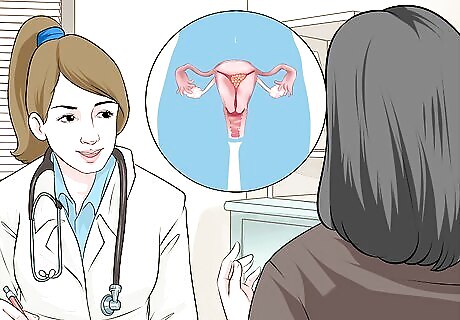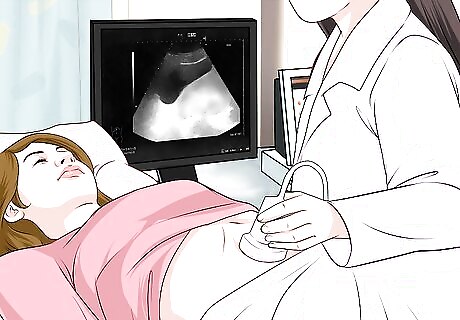
views
X
Research source
Monitoring Your Pregnancy

Wait to get pregnant if you had a previous molar pregnancy. If you have had one molar pregnancy, your risk of having a second is about 1 – 2%. Molar pregnancies are also more common in women who are younger than 20 or over 45.Your doctor may suggest waiting a year before trying again to get pregnant. Waiting will allow you to fully recover from the last one and to make sure all of the molar tissue was removed. If you get pregnant too soon, you have a higher risk of having another molar pregnancy.

Learn about molar pregnancies. Molar pregnancy occurs due to problems that occur during fertilization and result in nonviable embryos. This means that you cannot prevent or cause it. 0.1% to 0.3% of pregnancies are molar. In a complete molar pregnancy, the genetic material from the mother’s egg is lost or inactive and the genetic material from the sperm is duplicated. In a partial molar pregnancy, the father provides twice as much genetic material as normal, even though the genetic material from the mother is still there. This can happen if two sperm fertilize one egg.

Watch for symptoms of a molar pregnancy. If you are pregnant and have the following symptoms, you should go immediately to the doctor to get checked. Passing cysts through your vagina. They may be as large as grapes. Bleeding from your vagina during the first few months of pregnancy. The blood may be dark brown or fresh and bright red. Bleeding is usually heavier than it would be with a miscarriage, especially if you wait to be seen by a doctor. Nausea or vomiting. This may be so severe that you require hospitalization. A feeling of pressure or discomfort in your abdomen.

Get checked by a doctor. If you have had any symptoms of a molar pregnancy, your doctor will examine you for other signs such as: Abnormal levels of the pregnancy hormone HCG, or human chorionic gonadotropin Ovarian cysts A uterus that is expanding too fast for the stage of pregnancy you are in Anemia A raise in blood pressure before 20 weeks Preeclampsia, which is a dangerous condition in which your blood pressure increases and you get protein in your urine. You may have swelling in your feet and legs.

Confirm the diagnosis with an ultrasound. A complete molar pregnancy can be seen on ultrasounds as early as eight weeks into the pregnancy. An ultrasound uses sound waves to create a picture of the uterus and developing baby. If you have a complete molar pregnancy, the ultrasound may show that no embryo has developed, there is no amniotic fluid, the uterus is filled with a cystic placenta, or ovarian cysts. If you have a partial molar pregnancy, the ultrasound may reveal that the fetus is not growing properly, there is not enough amniotic fluid around the fetus, and the placenta is thick and filled with cysts.
Treating Molar Pregnancy

Have the cystic tissue removed. Even a partial molar pregnancy cannot develop into a viable fetus and must be removed. The doctor will: Use a technique called dilation and curettage. This is done as an outpatient procedure so you will be able to go home the same day. The doctor will dilate your cervix and insert a small vacuum through your vagina and into your uterus. The vacuum will remove the cystic tissue.

Allow the doctor to monitor your HCG levels after the tissue has been removed. The doctor will monitor your levels of HCG or human chorionic gonadotropin, which is how they can tell if all of the tissue is gone and if a cancer is developing after a molar pregnancy. This is why it is absolutely essential you go to your follow up appointments. If your HCG levels do not drop back to normal after treatment, it suggests that all the cystic tissue may not have been removed. Remaining cystic tissue is usually effectively treated with chemotherapy, usually methotrexate. Side effects may include nausea, vomiting, stomach pain, drowsiness, dizziness, or temporary hair loss. The doctor may want to continue monitoring your hormone levels for up to a year. Again, it is extremely important you allow your doctor to monitor your HCG levels for as long as they deem necessary.

Get emotional support. The emotional effects of losing a fetus and worrying about the risks of developing cancer can be severe. You may find it helpful to: Talk to your doctor See a counselor to help you deal with the grief and anxiety Get support from family and friends Find a support group or online forum. Options include the Molar Pregnancy Support group (http://www.molarpregnancy.co.uk/), MyMolarPregnancy (https://mymolarpregnancy.com/), or the Hydatidiform Mole UK Information and Support Service (http://www.hmole-chorio.org.uk/index.html)


















Comments
0 comment